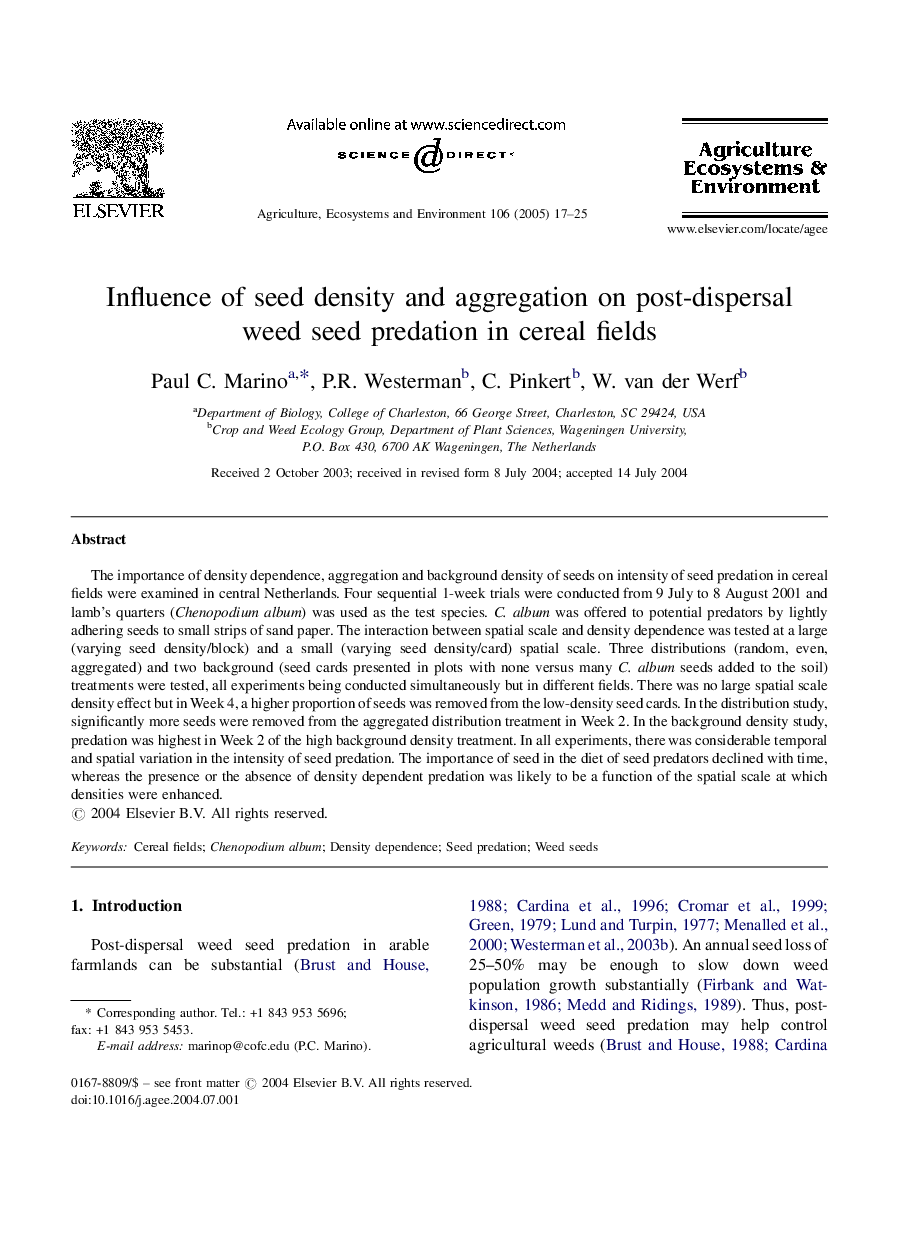| Article ID | Journal | Published Year | Pages | File Type |
|---|---|---|---|---|
| 8970851 | Agriculture, Ecosystems & Environment | 2005 | 9 Pages |
Abstract
The importance of density dependence, aggregation and background density of seeds on intensity of seed predation in cereal fields were examined in central Netherlands. Four sequential 1-week trials were conducted from 9 July to 8 August 2001 and lamb's quarters (Chenopodium album) was used as the test species. C. album was offered to potential predators by lightly adhering seeds to small strips of sand paper. The interaction between spatial scale and density dependence was tested at a large (varying seed density/block) and a small (varying seed density/card) spatial scale. Three distributions (random, even, aggregated) and two background (seed cards presented in plots with none versus many C. album seeds added to the soil) treatments were tested, all experiments being conducted simultaneously but in different fields. There was no large spatial scale density effect but in Week 4, a higher proportion of seeds was removed from the low-density seed cards. In the distribution study, significantly more seeds were removed from the aggregated distribution treatment in Week 2. In the background density study, predation was highest in Week 2 of the high background density treatment. In all experiments, there was considerable temporal and spatial variation in the intensity of seed predation. The importance of seed in the diet of seed predators declined with time, whereas the presence or the absence of density dependent predation was likely to be a function of the spatial scale at which densities were enhanced.
Related Topics
Life Sciences
Agricultural and Biological Sciences
Agronomy and Crop Science
Authors
Paul C. Marino, P.R. Westerman, C. Pinkert, W. van der Werf,
